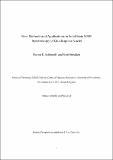Files in this item
New methods and applications in solid-state NMR spectroscopy of quadrupolar nuclei
Item metadata
| dc.contributor.author | Ashbrook, Sharon E | |
| dc.contributor.author | Sneddon, Scott | |
| dc.date.accessioned | 2015-10-07T23:11:35Z | |
| dc.date.available | 2015-10-07T23:11:35Z | |
| dc.date.issued | 2014-11-05 | |
| dc.identifier | 157378015 | |
| dc.identifier | f6e7783b-8e7d-43e7-8bea-7fb98fe6ff1b | |
| dc.identifier | 25296129 | |
| dc.identifier | 84908576832 | |
| dc.identifier | 000344516600001 | |
| dc.identifier.citation | Ashbrook , S E & Sneddon , S 2014 , ' New methods and applications in solid-state NMR spectroscopy of quadrupolar nuclei ' , Journal of the American Chemical Society , vol. 136 , no. 44 , pp. 15440-56 . https://doi.org/10.1021/ja504734p | en |
| dc.identifier.issn | 0002-7863 | |
| dc.identifier.other | ORCID: /0000-0002-4538-6782/work/56638900 | |
| dc.identifier.uri | https://hdl.handle.net/10023/7628 | |
| dc.description | The authors acknowledge the EPSRC for the award of a studentship to S.S. Accepted Oct 8th 2014 | en |
| dc.description.abstract | Solid-state nuclear magnetic resonance (NMR) spectroscopy has long been established as offering unique atomic-scale and element-specific insight into the structure, disorder, and dynamics of materials. NMR spectra of quadrupolar nuclei (I > (1)/2) are often perceived as being challenging to acquire and to interpret because of the presence of anisotropic broadening arising from the interaction of the electric field gradient and the nuclear electric quadrupole moment, which broadens the spectral lines, often over several megahertz. Despite the vast amount of information contained in the spectral line shapes, the problems with sensitivity and resolution have, until very recently, limited the application of NMR spectroscopy of quadrupolar nuclei in the solid state. In this Perspective, we provide a brief overview of the quadrupolar interaction, describe some of the basic experimental approaches used for acquiring high-resolution NMR spectra, and discuss the information that these spectra can provide. We then describe some interesting recent examples to showcase some of the more exciting and challenging new applications of NMR spectra of quadrupolar nuclei in the fields of energy materials, microporous materials, Earth sciences, and biomaterials. Finally, we consider the possible directions that this highly informative technique may take in the future. | |
| dc.format.extent | 17 | |
| dc.format.extent | 1870147 | |
| dc.language.iso | eng | |
| dc.relation.ispartof | Journal of the American Chemical Society | en |
| dc.subject | QD Chemistry | en |
| dc.subject.lcc | QD | en |
| dc.title | New methods and applications in solid-state NMR spectroscopy of quadrupolar nuclei | en |
| dc.type | Journal article | en |
| dc.contributor.institution | University of St Andrews. School of Chemistry | en |
| dc.contributor.institution | University of St Andrews. EaSTCHEM | en |
| dc.identifier.doi | https://doi.org/10.1021/ja504734p | |
| dc.description.status | Peer reviewed | en |
| dc.date.embargoedUntil | 2015-10-08 |
This item appears in the following Collection(s)
Items in the St Andrews Research Repository are protected by copyright, with all rights reserved, unless otherwise indicated.

